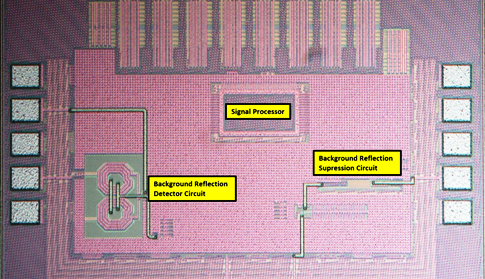Passive WiFi reduces Remote Device power needs
August 02, 2015
on
on

Researchers at NASA’s Jet Propulsion Laboratory have developed a new communication technique which could drastically reduce the amount of energy needed by devices communicating with the router. It seems to be a refinement of the technique we used as kids when we messed around sending messages back to the den using a mirror and the sun.
The remote device sends its information to the router by switching a circuit that can either absorb (to send a 0) or reflect (to send a 1) the RF energy from the router. This requires much less energy in the remote device than would be needed by a dedicated transmitter stage. The downside of the present setup is that the router is required to continuously transmit a 20dBm carrier wave and needs a decoder to detect subtle changes in the reflected signal.
The system has been tested at distances of up to 20 feet. At about 8 feet, they achieved a data transfer rate of 330 megabits per second, which is about three times the current Wi-Fi rate, using about a thousand times less power than a regular Wi-Fi link.
According to Adrian Tang of NASA's Jet Propulsion Laboratory in Pasadena, California "You can send a video in a couple of seconds, but the wearable device doesn’t consume the energy. The external transmitter is expending energy - not the watch or other wearable". Despite its radical departure from conventional WiFi protocol the team are working to make the system compatible. Read the press release from the JPL for more information.
The remote device sends its information to the router by switching a circuit that can either absorb (to send a 0) or reflect (to send a 1) the RF energy from the router. This requires much less energy in the remote device than would be needed by a dedicated transmitter stage. The downside of the present setup is that the router is required to continuously transmit a 20dBm carrier wave and needs a decoder to detect subtle changes in the reflected signal.
The system has been tested at distances of up to 20 feet. At about 8 feet, they achieved a data transfer rate of 330 megabits per second, which is about three times the current Wi-Fi rate, using about a thousand times less power than a regular Wi-Fi link.
According to Adrian Tang of NASA's Jet Propulsion Laboratory in Pasadena, California "You can send a video in a couple of seconds, but the wearable device doesn’t consume the energy. The external transmitter is expending energy - not the watch or other wearable". Despite its radical departure from conventional WiFi protocol the team are working to make the system compatible. Read the press release from the JPL for more information.
Read full article
Hide full article



Discussion (0 comments)